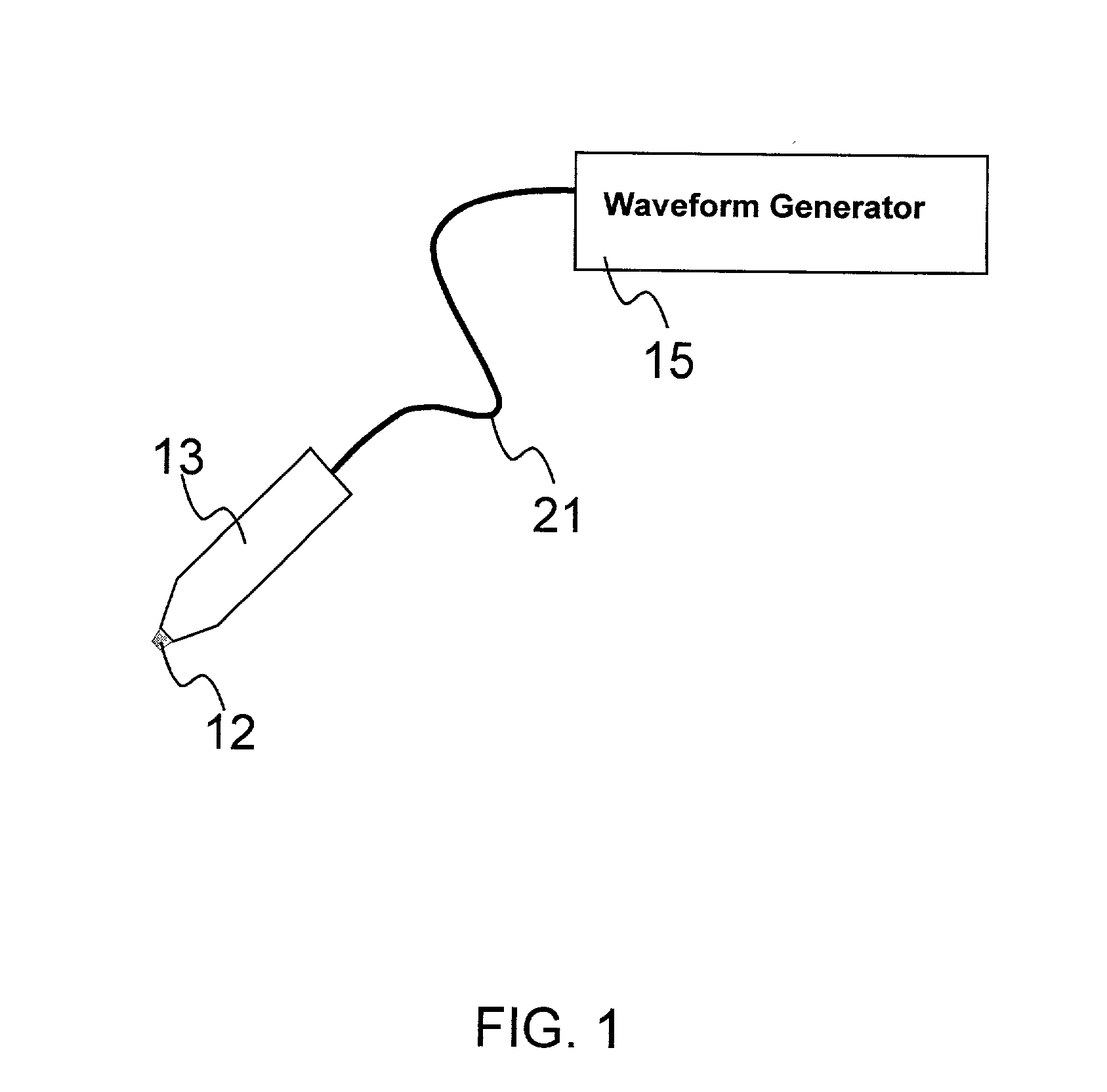Electrodes coated with treating agent and uses thereof
- Summary
- Abstract
- Description
- Claims
- Application Information
AI Technical Summary
Benefits of technology
Problems solved by technology
Method used
Image
Examples
Embodiment Construction
[0086] A method and apparatus are provided for delivery of macromolecules into cells, and with reference to the drawings, said method and apparatus are described below. The method for delivery of molecules into biological cells employs the apparatus set forth and includes the steps of
[0087] (a) providing electrodes 16 in an electrode assembly 12, wherein the electrodes have a fixed electrode surface 42,
[0088] (b) coating the fixed electrode surfaces 42 of the electrodes 16 with at least one static layer of electrode releasable molecules 44 to be delivered,
[0089] (c) attaching the electrode assembly 12 having the statically coated electrodes 16 to an electrode assembly holder 13,
[0090] (d) providing a waveform generator 15 for generating electric fields,
[0091] (e) establishing electrically conductive pathways between the electrodes 16 and the waveform generator 15,
[0092] (f) locating the electrodes 16 such that the biological cells are situated therebetween, and
[0093] (g) providing e...
PUM
| Property | Measurement | Unit |
|---|---|---|
| Electrical conductivity | aaaaa | aaaaa |
| Solubility (mass) | aaaaa | aaaaa |
| Electrophoretic | aaaaa | aaaaa |
Abstract
Description
Claims
Application Information
 Login to View More
Login to View More - R&D
- Intellectual Property
- Life Sciences
- Materials
- Tech Scout
- Unparalleled Data Quality
- Higher Quality Content
- 60% Fewer Hallucinations
Browse by: Latest US Patents, China's latest patents, Technical Efficacy Thesaurus, Application Domain, Technology Topic, Popular Technical Reports.
© 2025 PatSnap. All rights reserved.Legal|Privacy policy|Modern Slavery Act Transparency Statement|Sitemap|About US| Contact US: help@patsnap.com



